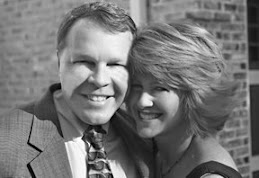There are as many ways to do the Camino as there are paths to Santiago de Compostela.
Many pilgrims, assured that “the Camino will provide,” embark with minimal planning & no booked lodging. This approach does indeed allow for serendipity & flexibility to stop where & when you tire, but can also lead to racing for limited bed space in many first-come, first-serve aubergues or an end-of-day unplanned walk to the next town seeking shelter. As anyone who knows me knows, I’m not a “wing it” sort of gal. Some may call it “anal”- I prefer “ serving myself up for success.” I get enjoyment reading about my travels as I plan- hunting for perfect spots along the way. I know I need daily goals & that I will have a spot to look forward to & call home each evening after a long day on the trail.
For the Camino, this has meant countless hours with fellow Camino friends & patient REI staff contemplating the virtues of boots vs. trail shoes, rain jackets vs. ponchos (apparently this is a very heated Camino subject) & the sexy topic of foot care.
They say you carry your fears in your pack. I must be deathly afraid of blisters & starving. My day pack happily houses a wide assortment of high-tech bandages, tapes, goos & my personal favorite, silicone toe condoms. I admit to wearing a pair as I type. I also have some Camino treats- Kind bars, gummy bears & even a few easter candies. My other fear appears to be chinches- bed bugs, as my gear has been doused & sprayed with repellent to make me the least attractive pilgrim in the aubergue.
Packing for the Camino is an art. With back issues, I’ll be sending ahead a pack with sleeping gear & such, but each pilgrim needs to carry on their back what they need for each day. Experts recommend a pack goal weight of no more than 10% of your body weight (finally that extra layer of winter blubber pays off!) With pack & water weight of over 5 pounds, it’s tricky to fit in cold weather & rain gear, a first aid kit, food, camera/phone, electronics & anything you want to keep safe & aren't willing to part with.
 As a single traveler for the first few weeks, every late night visit to the bathroom or post-hike shower requires bringing a waterproof sack of all your valuables from electronics to passport, in with you to the bathroom. I’m hoping to score a few lower bunks as I will be sleeping with these items in my sleep sack.
As a single traveler for the first few weeks, every late night visit to the bathroom or post-hike shower requires bringing a waterproof sack of all your valuables from electronics to passport, in with you to the bathroom. I’m hoping to score a few lower bunks as I will be sleeping with these items in my sleep sack.
So by now you’re asking, “And why are you doing this.” I’ve never been one to shy away from a challenge or adventure & the Camino promises to provide a blend of physical, mental & social elements. All this on a backdrop of bucolic scenery full of pilgrims all headed in the same direction with a common goal. Fellow pilgrims frequently hike in & out of your life throughout the journey, forming your “Camino family.” Folks report of joyous greetings as they reconnect with friends met earlier on the path. We'll gladly see what lies ahead. Wish me "Buen Camino."






















































